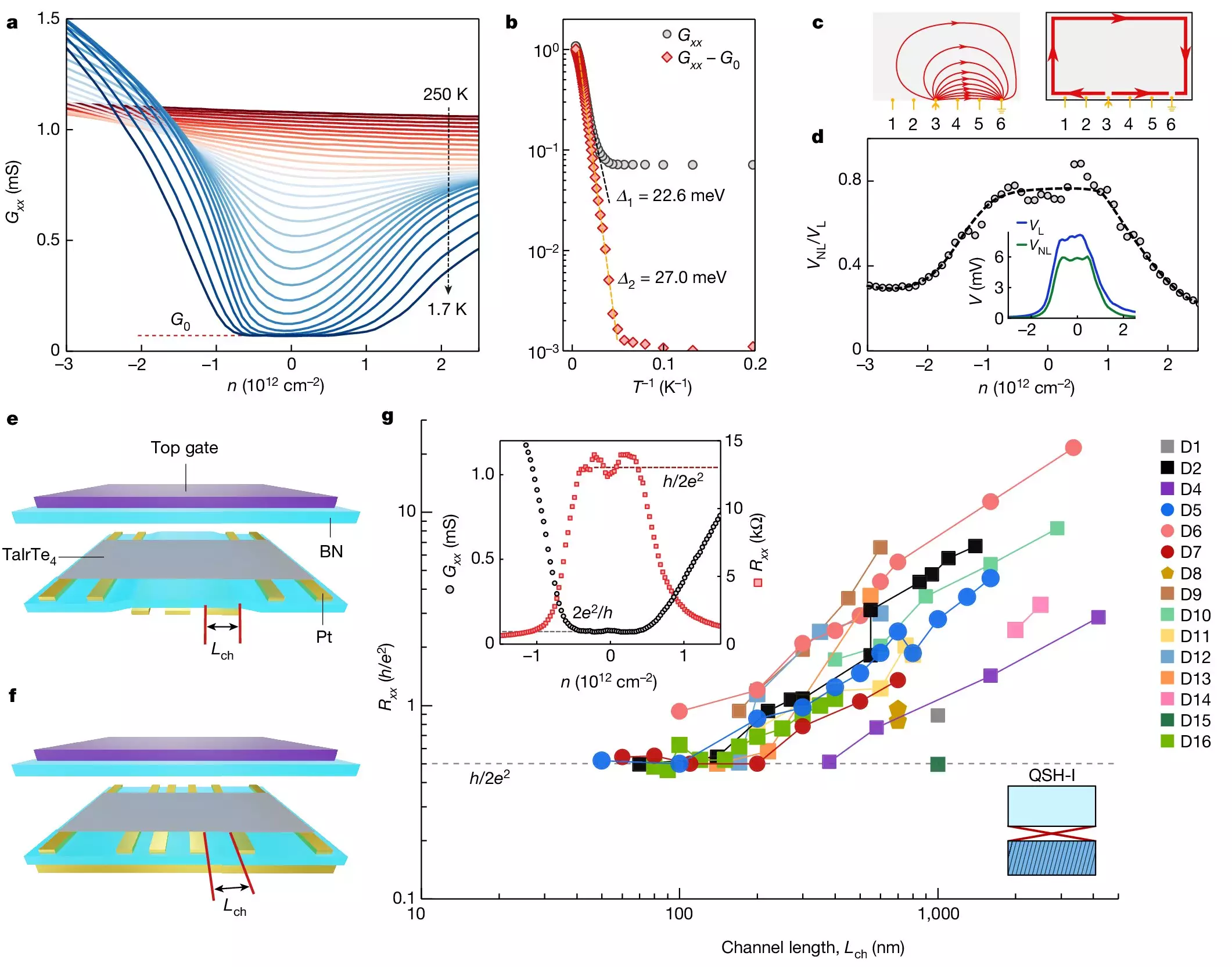In a groundbreaking revelation in the realm of quantum materials, an international team of researchers spearheaded by physicists from Boston College has recently unveiled the existence of dual topological phases within an intrinsic monolayer crystal. This discovery not only sheds light on new and unconventional properties of quantum materials but also paves the way for a deeper exploration of exotic quantum phases and electromagnetism. The team’s findings, published in the online edition of the prestigious journal Nature, mark a significant advancement in the field of condensed matter physics.
The Enigmatic Dual Topological Insulator
Led by Assistant Professor of Physics Qiong Ma, the research team engineered high-quality, atomically thin samples of TaIrTe4 to delve into the unique phenomena exhibited by these materials. TaIrTe4, composed of tantalum, iridium, and tellurium, manifested not one but two distinct topological insulating states, defying conventional theoretical predictions. The emergence of what the team terms the dual topological insulator showcases a fascinating duality in the material’s behavior, indicating uncharted territories in the realm of quantum physics.
The experimental investigation centered on exceptionally thin, two-dimensional layers of TaIrTe4, each less than 1 nanometer thick, presenting a staggering diminutiveness that underscores the precision and sophistication of the scientific inquiry. These ultrathin layers, resembling delicate flakes, were meticulously separated from a larger crystal using a simple yet ingenious method involving adhesive tape, a technique lauded with a Nobel Prize in materials science. The team’s meticulous analysis sought to unravel the intricacies of these nanomaterials’ electrical conductivity, necessitating the utilization of cutting-edge nanofabrication techniques like photolithography and electron beam lithography to establish nano-sized electrical contacts.
Unveiling the Quantum Spin Hall Insulator
The primary objective of the research endeavor was to evaluate the theoretical postulation suggesting that the thinnest layer of TaIrTe4 functions as a two-dimensional topological insulator, also known as a quantum spin Hall insulator. This distinctive material configuration, characterized by insulating interior regions where electricity flows exclusively along the boundaries without any energy dissipation, represents a paradigm shift in the design of energy-efficient electronic devices. The team’s manipulation of gate voltages enabled the observation of TaIrTe4’s seamless transition between the two distinct topological states, illuminating the material’s remarkable conductivity profile.
The experimental results surpassed the theoretical forecasts, posing a baffling conundrum for the scientists involved. The unanticipated behavior observed in TaIrTe4, where the addition of electrons initially heightened conductivity before unexpectedly reverting to an insulating state, underscored the enigmatic nature of these dual topological phases. Future investigations will involve interdisciplinary collaborations to unravel the underlying mechanisms driving this unexpected behavior, with a focus on enhancing the dissipationless topological conduction in TaIrTe4. Additionally, the team aims to construct heterostructures based on this novel material to unlock even more intriguing physical phenomena.
The discovery of dual topological phases in an intrinsic monolayer crystal represents a significant milestone in quantum material research, with far-reaching implications for the development of next-generation electronic devices. This innovative research not only challenges existing theoretical frameworks but also highlights the boundless possibilities that quantum materials offer in unraveling the mysteries of the universe.


Leave a Reply